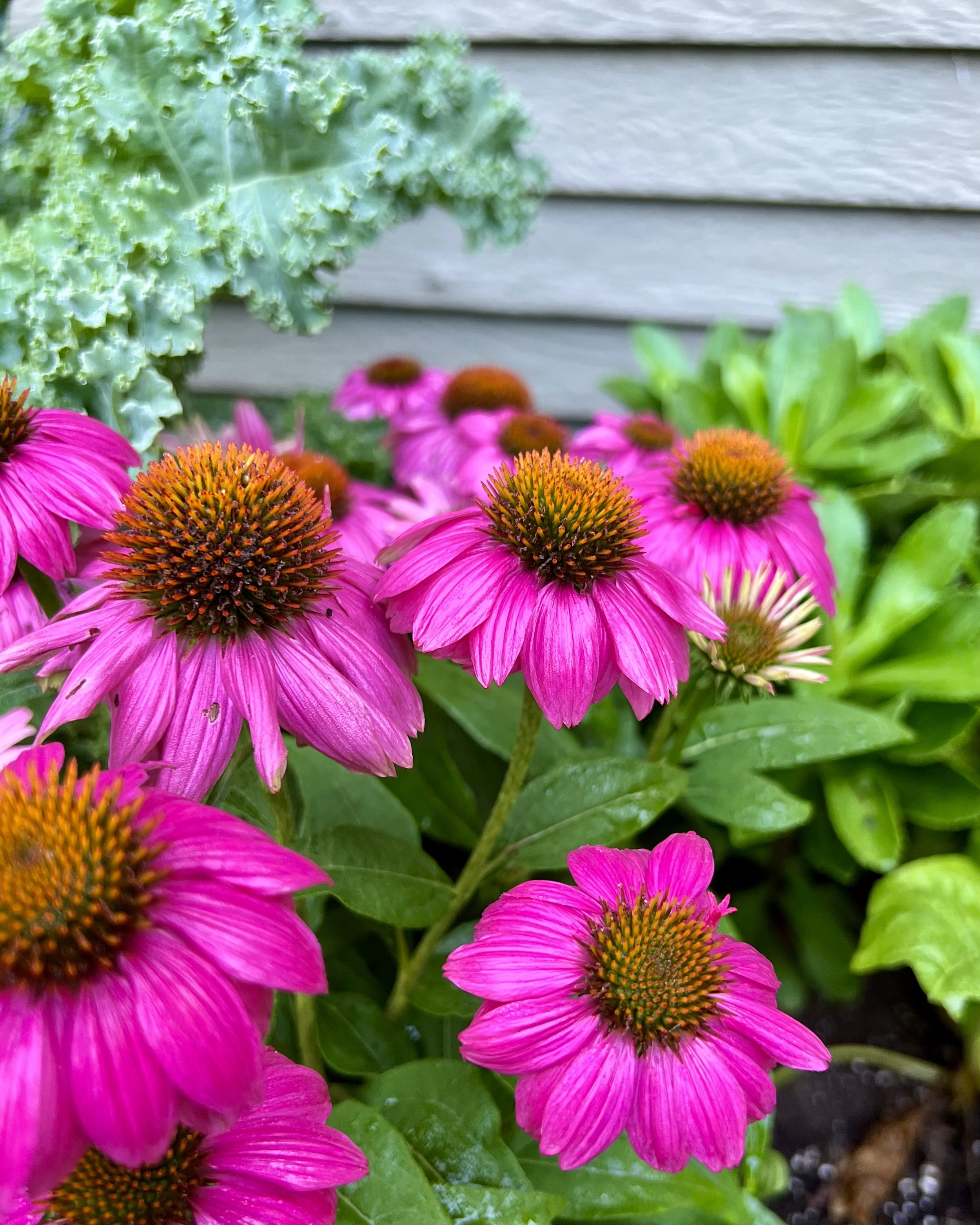Planting to attract the good guys
Want a more beautiful, less demanding, better for the planet, organic vegetable garden?
Clickbait-y start to this post? Yes, but I really, really want your attention. I’m pitching a win-win approach.
You’ll find that I usually preach “you do you” when it comes to the garden. However, if what you do involves spraying insecticides, hear me out. The impact of this goes well beyond your personal yard. My approach to pest control adds beauty and decreases work. Our common kitchen garden pests have natural predators so I put a lot of effort into attracting and supporting them.
When I started veggie gardening, I found wonderful resources listing plants that will repel pests. Marigolds and onions are great ones, however I soon realized that it wasn’t a complete strategy. I was relying on neem oil, BT, and other sprays labeled “organic” that I’ve since discovered were killing indiscriminately. It was also labor intensive and felt never-ending.
A few years in, my kids and I set up a Monarch Waystation alongside the fence of the kitchen garden. My veggie production exploded as it was buzzing with pollinators. I read everything I could about responsibly using my organic sprays and oil, and would try to time the application around when the bees and butterflies would visit. I heard about people purchasing lady beetles to eat aphids. (Please don’t…happy to get into why not.) And that got me thinking…how do I get them to come naturally? What eats my annoying pests, like squash beetles?
What is a Beneficial Insect?
The term is quite broad. We obviously need our tomatoes and cucumbers to be pollinated and so want to invite pollinators to visit. That’s one way insects are beneficial in our gardens. But in this post, we are focusing on insects that eat the bugs that eat our vegetable plants. These types of beneficial insects fall into two categories: predators and parasitoids. All of these may be a natural enemy at a certain point in a garden pest’s lifecycle- egg through maturity.
The insects in each killer category are often attracted to similar plants for nectar or as host plants for their wee offspring, which are superheroes in their own right. And when it comes to pests, they also tend to go after plants in the same plant family. There is a lot of overlap, which makes it easier for us.
What to plant?
While I write this as a New York gardener, and so the plant recommendations may be biased to my region, sadly aphids, cabbage worms, and whiteflies annoy gardeners all over the US.
We will all rely heavily on members of the Asteraceae (Aster) and Apiaceae (Carrot) families to attract the good bugs so the suggestions offered will most likely apply. You may also have some native options available so it’s worth a quick google search. The Lamiaceae (Mint) family is another helper by attracting parasitic wasps and lady beetles, to make a few.
One example of well-rounded team in the veg garden includes Yarrow, Cosmos, Zinnia, Veronicas, Calendula, Anise Hyssop, and Singet Marigold. Plus lots and lots of dill, fennel, and cilantro that I leave in the garden to flower.
I am so, so excited to share a new tool that I created to help you determine which plants to add to your garden to attract beneficial insects. The Kitchen Gardeners Guide to Pests and Allies provides the ability to search by vegetable plant to see common pests, their predators, and the plants to attract those good guys. Or, alternatively, if you know what pests are commonly found in your vegetable garden, you can select in the other drop down menu. The recommended plants were chosen specifically for kitchen gardens, taking size and spreading habits into consideration. Ultimately, there is a lot, if not complete, overlap when you consider the lifecycle of the pest and how plant families work. This tool will help you identify your enemy, your allies, and the greatest defenses that nature has to offer the kitchen garden.
The Kitchen Gardener’s Guide to Pests & Allies is here!
How many plants?
In both the Hudson Valley and on my Manhattan rooftop, I dedicate about 20% of my kitchen garden space to attracting beneficial insects. That’s not including the ever expanding pollinator gardens that I have around my property or on my city neighbor’s roof. So far, this ratio has created a relatively balanced little ecosystem. Some plants are integrated into the raised beds and containers, while others are planted separately but nearby. I also regularly check my vegetables, looking under the leaves for signs of pests.
I’ll flick them into a soap bucket or remove eggs with a piece of tape but this doesn’t take more than 10 minutes a day. I’ll prune and harvest at the same time. Occasionally, the pests win and in those cases, I don’t think twice about pulling the plant. It’s usually a sign that it’s unhealthy or past its peak.
It takes a bit of planning to incorporate these working plants in our kitchen gardens but the rewards are pretty stellar. The flowers add beauty, the beneficial insects take over the lion’s share of pest control, and you are creating a healthier ecosystem.
Happy planting,
Kiera




